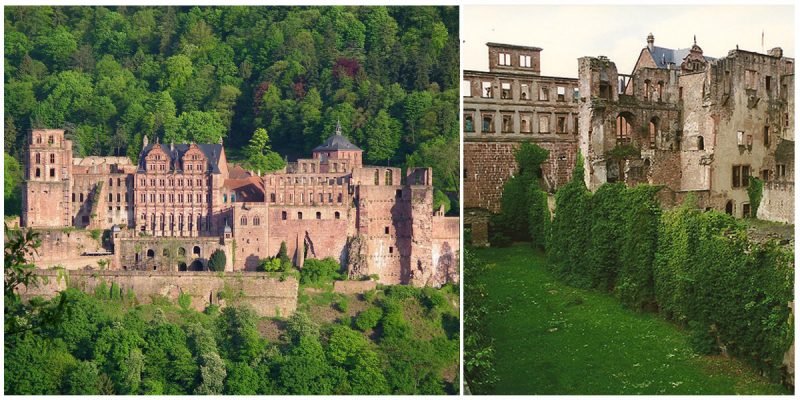The ruins of Heidelberg Castle are among the most important Renaissance structures placed north of the Alps.
The first structure of the castle was built before 1214 and later was expanded in two castles in 1294. The upper castle was destroyed by a lightning bolt twice in 1537 and in 1764.
The castle was first mentioned as “Heidelberch” in 1196. When Conrad of Hohenstaufen was made the Count Palatine by his half-brother Frederick Barbarossa in 1155, the region became known as the Electorate of the Palatinate (a historical territory of the Holy Roman Empire).
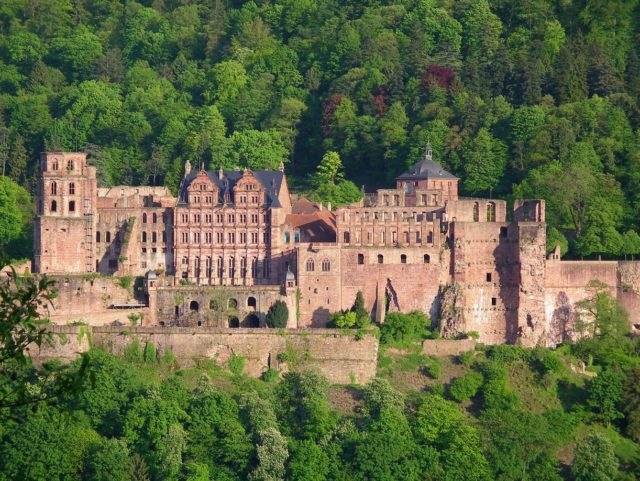
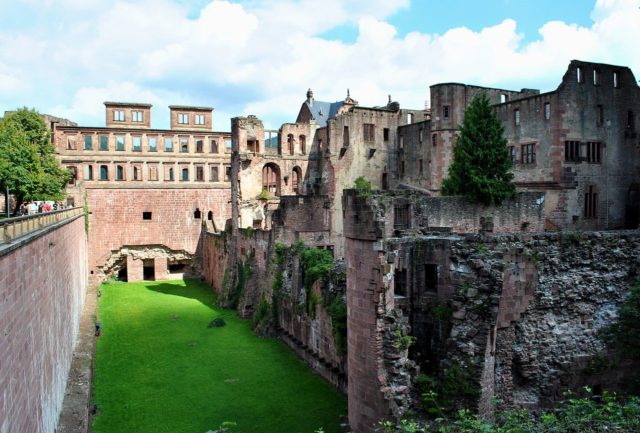
It is believed that Conrad’s main residence was on the Schlossberg, known as the Jettenbuhl. The name “Jettenbuhl” comes from the soothsayer Jetta, who supposedly had lived there.
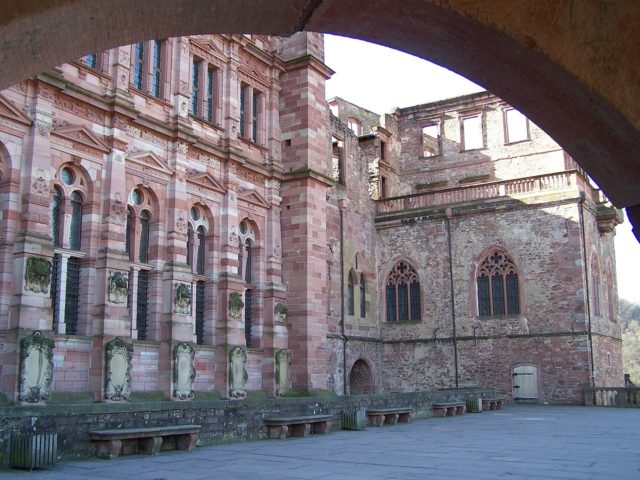
There are a few documents about the castle that do not contain much information. The first mention of a castle in Heidelberg is in 1214, when Louis I, Duke of Bavaria of the House of Wittelsbach received it from Hohenstaufen Emperor Friedrich II.
Two castles are mentioned for the first time in a document from 1303. The first one is the upper castle on Kleiner Gaisberg Mountain which was destroyed in 1537 and the second is the lower castle on the Jettenbuhl which is the present castle site. Presumably, the lower castle was constructed sometime between 1294 and 1303.
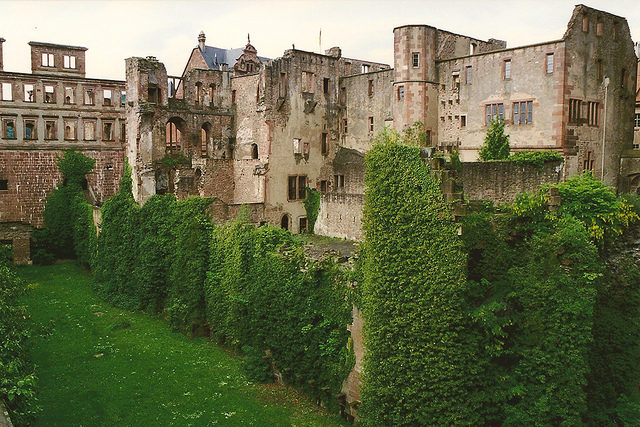
During the 1600s, the oldest documents about the Heidelberg Castle were found. There are four references and all of these works are mostly superficial and do not contain much information. Most of the descriptions of the castle up until the 18th century are based on Merian’s work Topohraphia Palatinatus Rheni.
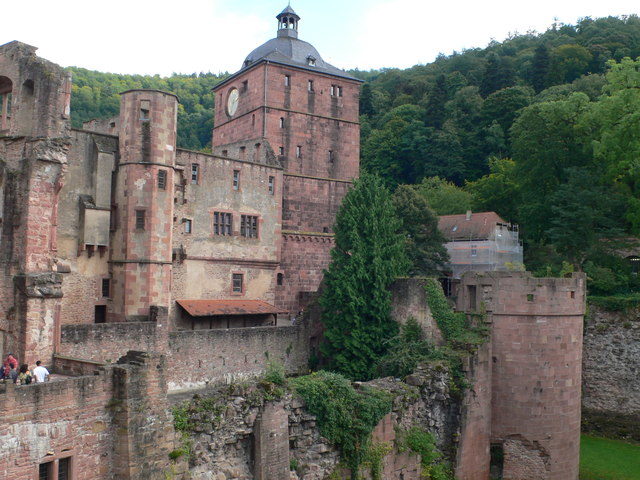
In 1401, Rupert of the Palatinate became the King of Germany. When he was returning from his coronation, the castle was so small that he had to camp out in the Augustinians’ monastery. He had an idea to make more space for his entourage and court and to impress his guests.
Also, he added defenses to turn the castle into a fortress. After his death in 1410, the land was divided between his four sons. The Palantine was given to his eldest son Ludwig III.
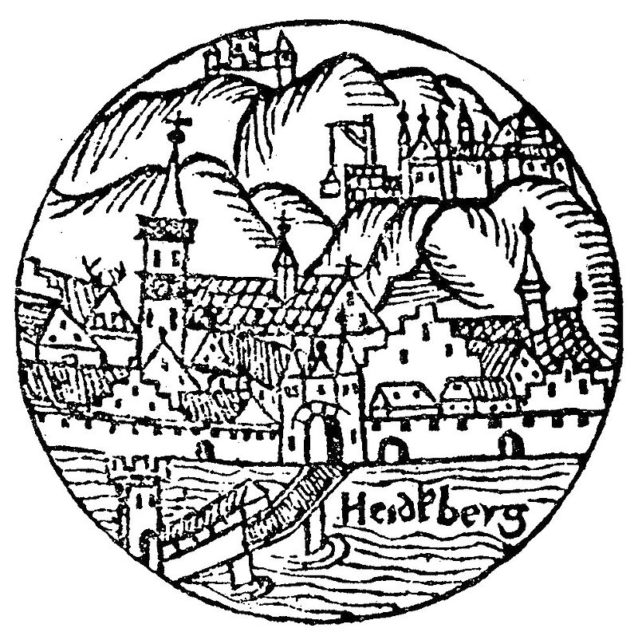
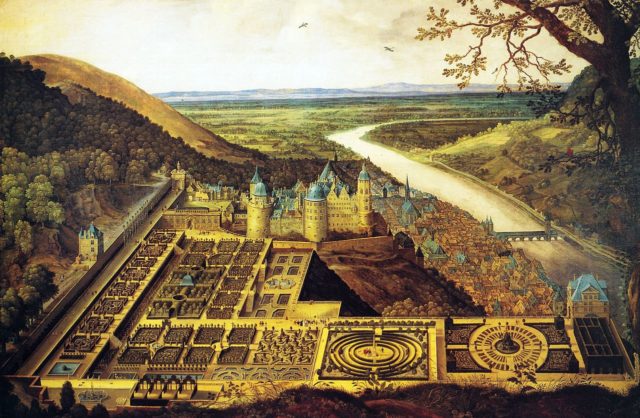
The Ruprecht wing with its Rennaissance fireplace is the oldest still discernibly residential building in the castle and the best-preserved building is the Friedrich wing whose façade is rich with statues of the electors.
The church of the castle is on the ground floor and remains intact. In the 17th century, the Heidelberg castle was celebrated as the Eighth Wonder of the World. The remains today are one of the most beautiful examples of Renaissance architecture. The famous garden of the castle, the Hortus Palantinus was never completed.
